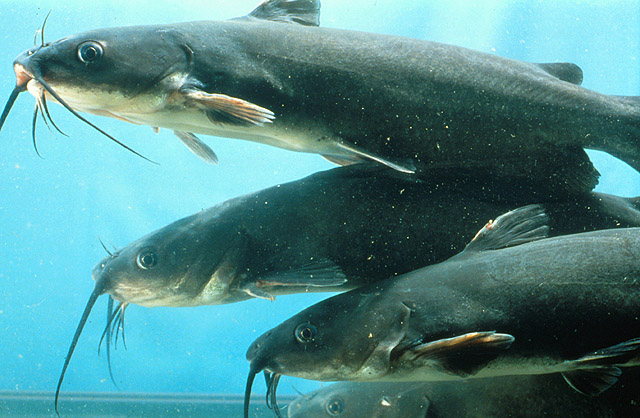
Refining the Appeal of a Regional Favorite
Researchers are Throwing Overboard the Off-Flavors in Catfish
Catfish is huge in the Southeast – a mealtime staple, major employer, and tourist magnet – but that industry nearly became the one that got away.
Production and consumption of American-grown catfish has fallen since the turn of the century. Studies show this downturn was due, in part, to naturally occurring chemicals that created an off-flavor in the meat. As a result, foreign competition took a large bite out of the American market.
Researchers at the Agricultural Research Service's (ARS) Southern Regional Research Center in New Orleans, LA, have been tackling the problem; the Food Processing and Sensory Quality (FPSQ) research unit there is conducting research to ensure better quality of U.S. catfish compared to imports.
"My colleagues and I are working on methods to better define the off-flavor issues," said Brennan Smith, FPSQ research leader. "In fact, we have drastically improved upon the traditional methods of assessing off-flavors and are more accurately quantifying the chemicals that produce them."
Chemicals from blue-green algae blooms are the primary culprit in producing the off-flavor, but it can also come from other microbes. Fish largely collect these chemicals through their gills, but researchers did find an oral route as well. With that new information, Smith said the unit's goal has been to establish a "consumer rejection threshold" that industry can use to limit the number of off-flavor fish that reach consumers.
As with many things, prevention is often the best remedy. Smith's team is interested in various management practices to reduce the amount of off-flavor compounds that fish accumulate prior to harvest. In one such practice, known as depuration, fish are placed in holding tanks of clean water for a limited time to allow them to purge whatever off-flavors they may have absorbed.
In addition to pre-harvest methods, the FPSQ researchers are looking into techniques to eliminate off-flavors as part of processing.
 Catfish. (Photo by David Nance, K5328-10)
Catfish. (Photo by David Nance, K5328-10)
"Now that we can more accurately assess off-flavor chemicals with our newly developed methods, we can work on treatments to reduce or eliminate this defect," Smith said. "For example, there are food-safe acids that are known to break down some off-flavors. Application of these treatments can be tricky, as we do not want to noticeably change the flavor and texture of the fish."
In addition, ultraviolet-C (UVC) light is a popular treatment for reducing bacteria on a variety of surfaces, including food. In this case, UVC treatment can reduce some of the effects of catfish spoilage, such as microbial degradation, oxidation, and autolysis (the first stage of decomposition).
Smith said that UVC treatments could also pair well with other food storage techniques, like modified atmosphere packaging (MAP) to increase the shelf life of fresh catfish. MAP is a packaging system that involves changing the gaseous atmosphere inside the package and using special packaging material to improve food preservation.
Even with all the progress made toward detecting and reducing off-flavors, the final piece of this pond-to-lab-to-consumer puzzle hangs on the end of a fork; does American catfish pass the taste test? To answer that question, researchers are relying on one of the most finicky pieces of equipment in the field – the human taste bud.
"The only way to really, scientifically, say how a food tastes is to have people try it," Smith said. "Our sensory lab is a specially designed space where we run taste tests with people who have gone though many hours of training so that they can act as 'human instruments.' After they taste the fish, they can put a precise number on the level of off-flavor. This tells us how different samples are in terms of off-flavor, or if people can detect it at all."
Landing a solution to the off-flavor problem is a work in progress, but scientists have plenty of reason to keep trying; studies show that retail sales of U.S. catfish have increased 22% in the past 5 years. – By Scott Elliott, ARS Office of Communications
Also in our Mardi Gras series:
